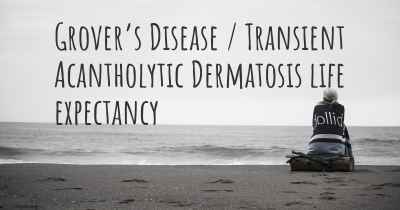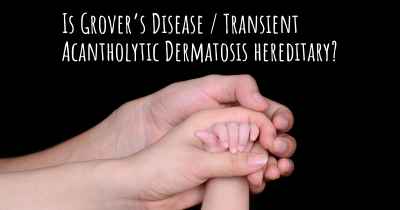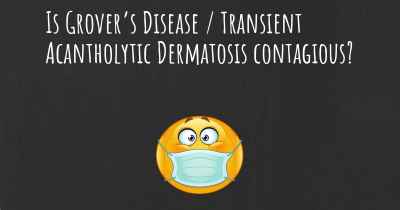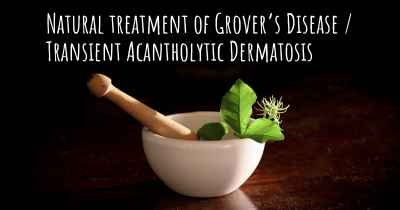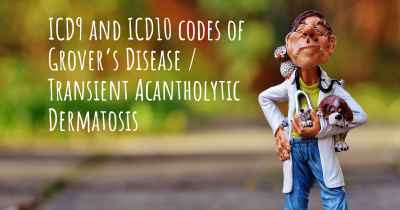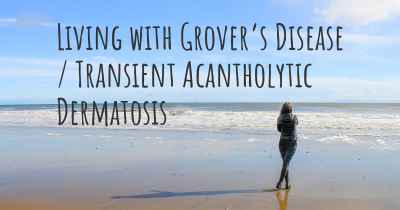Grover’s Disease / Transient Acantholytic Dermatosis and depression
Can Grover’s Disease / Transient Acantholytic Dermatosis cause depression? Could it affect your mood? Find out how Grover’s Disease / Transient Acantholytic Dermatosis can affect your mood.
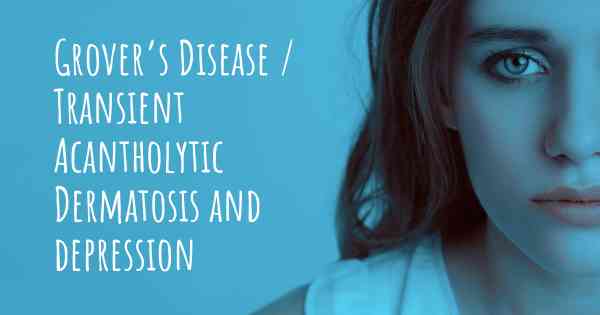
Grover’s Disease / Transient Acantholytic Dermatosis and Depression
Grover’s Disease, also known as Transient Acantholytic Dermatosis, is a skin condition characterized by itchy red bumps that primarily affect the chest and back. While the exact cause of this condition is unknown, it is believed to be associated with factors such as heat, sweating, and sun exposure. Grover’s Disease typically affects older adults, particularly men over the age of 40.
Living with Grover’s Disease can be challenging, as the persistent itching and discomfort can significantly impact one's quality of life. It is not uncommon for individuals with this condition to experience emotional distress, including depression.
Depression is a mental health disorder characterized by persistent feelings of sadness, hopelessness, and a loss of interest in activities. It can affect anyone, regardless of their physical health. When dealing with a chronic skin condition like Grover’s Disease, the emotional toll can be substantial.
The constant itching and discomfort associated with Grover’s Disease can lead to sleep disturbances, irritability, and social withdrawal. These symptoms can contribute to feelings of isolation and sadness, which may eventually develop into depression. Additionally, the visible nature of skin conditions can also impact self-esteem and body image, further exacerbating depressive symptoms.
It is crucial for individuals with Grover’s Disease to seek support and treatment for both their physical and mental well-being. Here are some strategies that may help:
- Medical Treatment: Consult a dermatologist who can provide appropriate treatment options to manage the symptoms of Grover’s Disease. This may include topical creams, antihistamines, or other medications to alleviate itching and inflammation.
- Psychological Support: Consider seeking therapy or counseling to address the emotional impact of living with Grover’s Disease. A mental health professional can help develop coping strategies, provide support, and assist in managing depressive symptoms.
- Self-Care: Engage in activities that promote relaxation and self-care. This may include practicing mindfulness or meditation, engaging in hobbies, or participating in gentle exercises that do not exacerbate the skin condition.
- Support Network: Reach out to friends, family, or support groups who can provide understanding and empathy. Sharing experiences with others who have similar conditions can be comforting and help combat feelings of isolation.
- Healthy Lifestyle: Maintain a healthy lifestyle by eating a balanced diet, getting regular exercise, and ensuring adequate sleep. These factors can positively impact both physical and mental well-being.
Remember, it is essential to consult with healthcare professionals for an accurate diagnosis and personalized treatment plan. By addressing both the physical and emotional aspects of Grover’s Disease, individuals can better manage their condition and improve their overall well-being.
